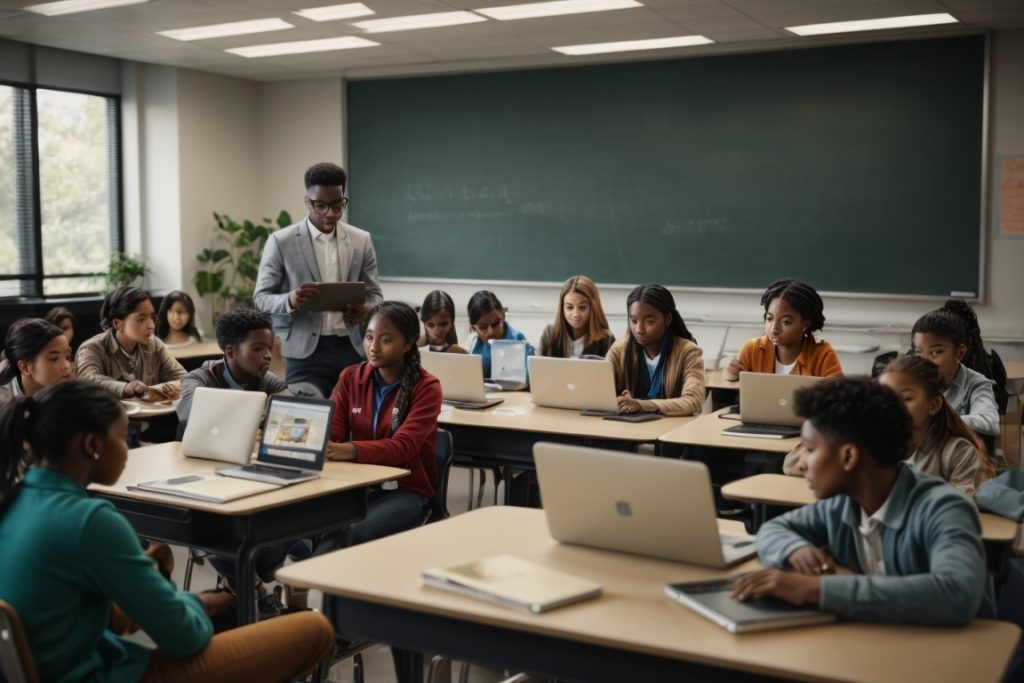
The Role of Technology in Modern Classrooms
The integration of technology in education has transformed traditional teaching and learning practices, offering new opportunities and challenges in equal measure. In this blog post, we will explore the role of technology in modern classrooms, examining how it is reshaping education and its various benefits and drawbacks.
Understanding the Integration of Technology in Education
Modern education has embraced technology to create more interactive, engaging, and personalized learning experiences. From primary schools to universities, technology is an integral part of the educational landscape, involving tools like computers, tablets, smartboards, digital textbooks, online learning platforms, and educational software.
1. Digital Literacy and Skills Development
One of the primary roles of technology in education is the development of digital literacy. In an increasingly digital world, students must be proficient in using technology. Skills such as coding, digital communication, and online research are now fundamental.
2. Enhanced Access to Information
Technology provides students with almost unlimited access to educational resources. Online libraries, digital textbooks, educational apps, and vast databases offer a wealth of information beyond traditional textbooks.
3. Interactive and Engaging Learning
Digital tools have introduced more interactive and engaging teaching methods. Interactive whiteboards, educational software, and online simulations create dynamic learning environments that can cater to various learning styles.
4. Personalized Learning Experiences
Technology enables personalized learning, where students can learn at their own pace and style. Adaptive learning software tailors educational content to individual student needs, helping to address learning gaps.
5. Collaboration and Communication
Technology facilitates collaboration and communication among students and teachers, both inside and outside the classroom. Tools like Google Classroom, Microsoft Teams, and other collaborative platforms allow for easy sharing of resources and real-time feedback.
6. Preparing Students for the Future
The integration of technology in education prepares students for a tech-driven world. Familiarity with technology and its applications equips students with skills that are crucial in most modern workplaces.
Benefits of Technology in Education
- Enhanced Learning Opportunities: Technology provides access to a wide range of resources and learning opportunities, breaking geographical and socioeconomic barriers.
- Improved Student Engagement: Interactive and multimedia content can make learning more engaging and enjoyable, leading to better student motivation.
- Data-Driven Insights: Technology enables the collection of data on student performance, which can be used to improve teaching strategies and personalized learning.
- Flexibility and Accessibility: Online learning platforms and resources offer flexibility, allowing students to learn anytime and anywhere.
- Skill Development: Exposure to technology in education helps students develop essential skills like problem-solving, critical thinking, and digital literacy.
Drawbacks of Technology in Education
- Digital Divide: There is a significant digital divide, with students in lower socioeconomic areas having limited access to technology, leading to inequalities in educational opportunities.
- Overreliance on Technology: Excessive reliance on technology can diminish fundamental skills like handwriting, mental arithmetic, and face-to-face social interactions.
- Distractions and Misuse: Technology, especially the internet, can be a source of distraction for students, and misuse can lead to issues like cyberbullying and exposure to inappropriate content.
- Quality Concerns: Not all online resources are credible or high-quality. Students and educators need to be discerning in selecting educational content.
- Technical Issues and Costs: Technical problems can disrupt learning. Additionally, the cost of updating and maintaining technological infrastructure can be high.
Integrating Technology Effectively in Education
- Balanced Approach: Balance the use of technology with traditional teaching methods to ensure that students develop a wide range of skills.
- Training for Educators: Teachers should receive adequate training and support to integrate technology effectively into their teaching practices.
- Encouraging Digital Citizenship: Teach students about responsible use of technology, including digital etiquette, safety, and the evaluation of online information.
- Addressing the Digital Divide: Efforts should be made to provide access to technology for all students, regardless of their background.
- Monitoring and Evaluation: Continuously monitor and evaluate the impact of technology on student learning and make adjustments as needed.
The Future of Technology in Education
Looking ahead, technology is likely to play an even more prominent role in education. Emerging technologies such as Artificial Intelligence (AI), Virtual Reality (VR), and Augmented Reality (AR) are set to offer more immersive and personalized learning experiences. The challenge will be to harness these technologies in a way that enriches education while addressing the associated challenges.
The integration of technology in modern classrooms has significantly transformed educational practices, offering numerous benefits but also posing some challenges. It has made education more accessible, interactive, and personalized, preparing students for a future in a digital world. However, issues like the digital divide, overreliance on technology, and quality control need to be addressed to maximize its benefits. As we move forward, the focus should be on striking a balance between traditional teaching methods and technological advancements, ensuring that technology acts as a tool to enhance learning and not as a replacement for fundamental educational principles.